Great Smoky Mountains National Park
If you’re craving an escape into nature’s splendor, Great Smoky Mountains National Park should be on your radar. This expansive park, straddling the border between North Carolina and Tennessee, offers a mesmerizing blend of lush forests, historic sites, and diverse wildlife. Let’s dive into what makes the Great Smoky Mountains National Park a must-visit destination in 2024 via the following details from nationalparkshops.com!
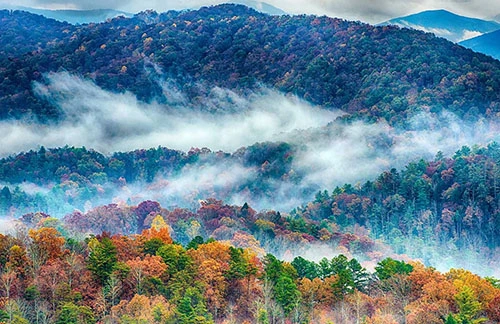
Great Smoky Mountains National Park Overview
As the most visited national park in America, the Great Smoky Mountains offer an ideal escape. Immerse yourself in hiking, camping, and exploring one of the country’s oldest mountain ranges.
Established in 1926, Great Smoky Mountains National Park stretches along the border of North Carolina and Tennessee, featuring a seemingly endless expanse of ridges and forests. Known as the Smokies for the ever-present morning fog, this park is celebrated worldwide for its rich biodiversity, stunning ancient mountains, and deep-rooted Appalachian culture. With nearly 80 historic buildings, vibrant wildflower displays, and abundant wildlife, the park provides countless opportunities for adventure.
The park is split by the Tennessee-North Carolina border, with visitor centers—Sugarlands and Oconaluftee—located on opposite sides of the state line and surrounded by extensive deciduous forests. Numerous waterfalls grace the park, with prominent ones like Grotto, Laurel, Abrams, Rainbow, and Mingo attracting over 200,000 visitors each year.
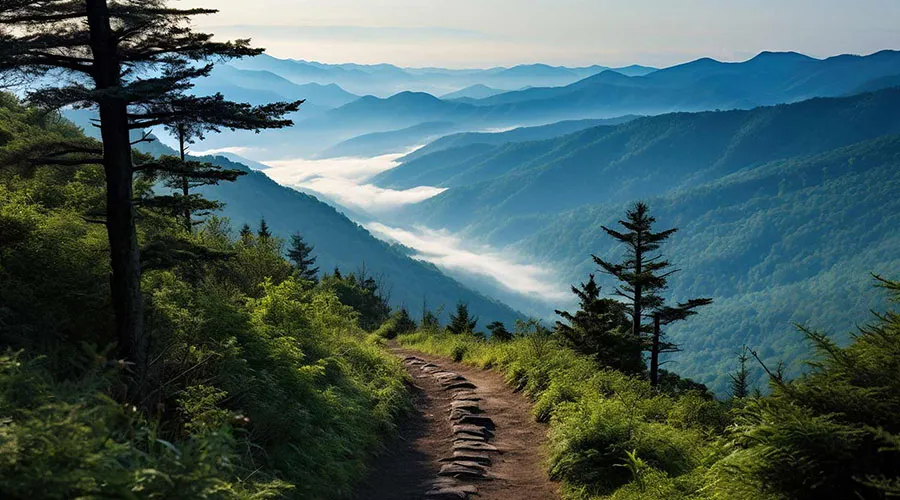
Things to do in Great Smoky Mountains National Park
Great Smoky Mountains National Park is teeming with activities that cater to all types of visitors.
Hiking
Hikers find enjoyment in the Smoky Mountains year-round, with each season offering unique experiences. Winter unveils new vistas along trails as deciduous leaves fall away, exposing stone walls, chimneys, and other remnants of former inhabitants. Spring brings a stunning display of wildflowers and blooming trees every week.
In summer, walkers can cool off in the spruce-fir forests, explore open balds, or follow lively mountain streams to majestic waterfalls. Autumn offers crisp, invigorating air and a vibrant array of fall colors that enhance the hiking experience.
Some of the park’s most sought-after hikes include:
-
Charlies Bunion
-
Alum Cave Bluffs
-
Andrews Bald
-
Rainbow Falls
-
Chimney Tops
Choosing a trail can be one of the most challenging decisions for hikers. It’s important to consider your hiking experience and choose a distance that matches your fitness level. For beginners, a roundtrip hike of up to five miles is a sensible limit to ensure a manageable and enjoyable adventure.
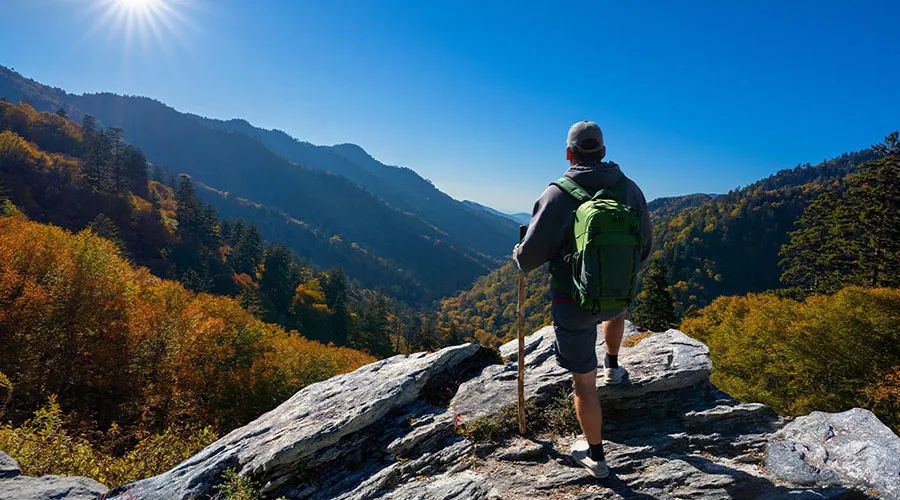
Touring Cades Cove
Cades Cove, a picturesque valley nestled among mountains south of Townsend, Tennessee, offers a wealth of experiences. The valley is encircled by an 11-mile one-way loop road, which provides access to hiking trails, wildlife viewing, and exploration of historic homesites, cemeteries, and churches. Additionally, the area features a visitor center, campground, picnic area, and riding stable.
The 11-mile loop road around the cove allows drivers to enjoy a leisurely sightseeing tour. Plan to spend at least two to four hours exploring Cades Cove, with more time needed if you choose to hike some of the trails. Be aware that traffic can be heavy during the summer and fall tourist seasons, as well as on weekends throughout the year.
Places to go in Cades Cove
-
Cades Cove Picnic Area
-
Dan Lawson Place
Things to do in Cades Cove
-
Hike to Abrams Falls
-
Walk to John Oliver Cabin

Explore Waterfalls
Each year, more than 200,000 visitors explore popular trails to witness iconic waterfalls such as Grotto, Laurel, Abrams, and Rainbow in the park. While these large waterfalls draw significant crowds, smaller cascades and falls can be discovered along nearly every river and stream within the park.
The Great Smoky Mountains are rich in the two key elements necessary for waterfalls: ample rainfall and an elevation gradient. The high country of the Smokies receives an average of over 85 inches of rain annually. In particularly wet years, peaks like Mt. Le Conte and Clingmans Dome can receive more than eight feet of rain. This abundant precipitation cascades down the mountainsides, creating waterfalls that drop over a mile in elevation from the high peaks to the foothills at the park’s boundary.
Paths to hike to the waterfall
Abrams Falls: Though Abrams Falls stands at just 20 feet high, its impressive water flow makes up for its modest height, creating a powerful and captivating sight.
Grotto Falls: Located along the Trillium Gap Trail, Grotto Falls is unique for its 25-foot drop and the opportunity it offers to walk behind the cascading water, all while meandering through an old-growth hemlock forest.
Hen Wallow Falls: A delightful journey through a lush hemlock and rhododendron forest leads to the 90-foot Hen Wallow Falls, offering a serene and scenic experience.
Indian Creek and Toms Branch Falls: A short, 1.6-mile roundtrip hike in the Deep Creek area rewards visitors with views of two beautiful waterfalls, making it a quick and satisfying adventure.
Juney Whank Falls: Juney Whank Falls features both an upper and lower section, collectively dropping 90 feet, creating a striking and dramatic waterfall.
Laurel Falls: One of the park’s most visited spots, Laurel Falls is an 80-foot high waterfall renowned for its picturesque beauty and accessibility.
Lynn Camp Prong Cascades: A brief, easy walk offers visitors a chance to admire multiple cascades along the Lynn Camp Prong, making it a pleasant and scenic outing.
Mingo Falls: Standing at 120 feet, Mingo Falls is one of the tallest waterfalls in the southern Appalachians, offering a breathtaking and impressive sight.
Mouse Creek Falls: Hidden away in the Big Creek area, Mouse Creek Falls is a 45-foot high waterfall that provides a peaceful escape from the more crowded spots.
Rainbow Falls: This 80-foot high waterfall often creates a beautiful rainbow in the mist on sunny afternoons, adding a magical touch to the scenic view.
Ramsey Cascades: As the tallest waterfall in the park, Ramsey Cascades stands out for its sheer height and stunning beauty, making it one of the most spectacular waterfalls in the area.
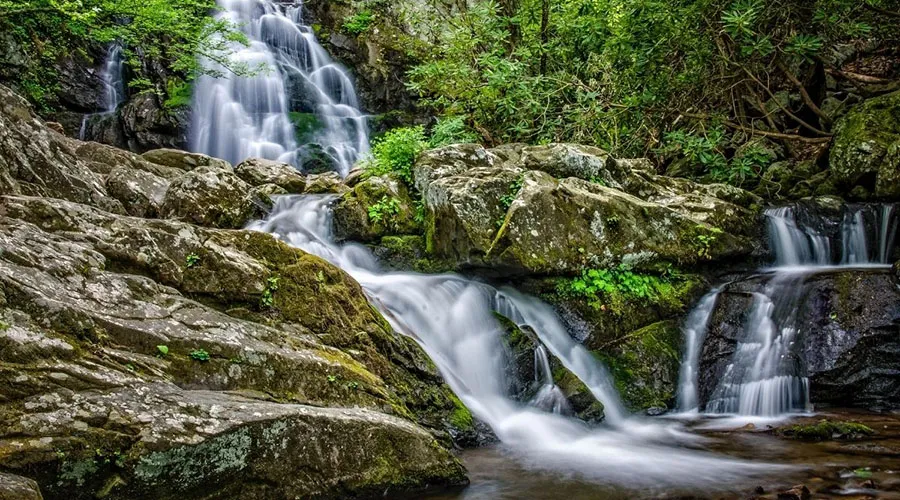
Visit Historic Buildings
Great Smoky Mountains National Park boasts one of the finest collections of log buildings in the eastern United States. The park preserves or has rehabilitated over 90 historic structures, including houses, barns, outbuildings, churches, schools, and gristmills. To see these historic sites, visit Cades Cove, Cataloochee, Oconaluftee, and the Roaring Fork Motor Nature Trail. Self-guiding auto tour booklets are available at these locations to enhance your experience.
Some of these structures are also listed on the National Register of Historic Places, reflecting their exceptional historical significance and the meticulous state and federal efforts to preserve them. The accompanying map highlights these notable sites, which offer a glimpse into past community life and are maintained for educational and interpretative purposes.
For books, maps, and guides related to the park, visit the official online store of Great Smoky Mountains National Park. Managed by the nonprofit Smokies Life, the store’s proceeds support educational, scientific, and historical initiatives within the park.
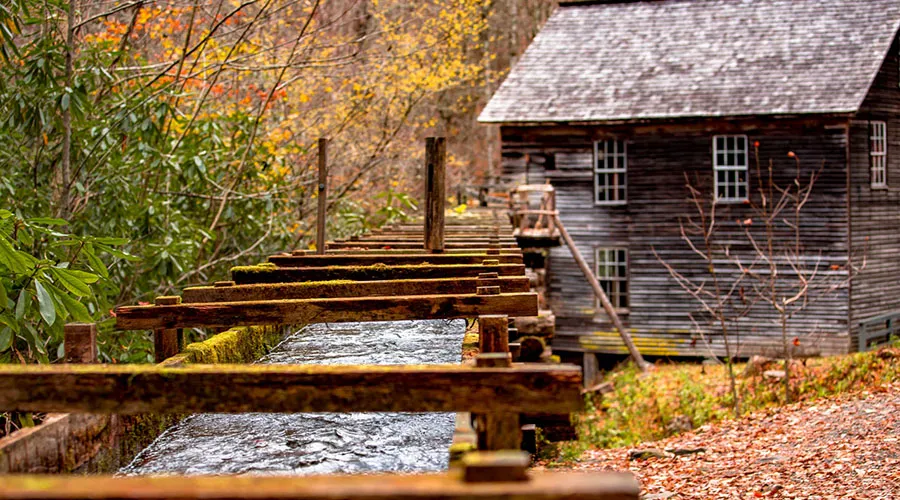
Burial Landscapes
The historic cemeteries within the park are key elements of its early landscape, connecting the contemporary Great Smoky Mountains National Park with its rich historical heritage. These cemeteries offer valuable insights into past burial practices, religious beliefs, cultural and ethnic influences, and the origins and development of local communities. They also reflect the landscape design principles of earlier times.
While many early remnants of the park’s communities may have disappeared, these cemeteries often stand as some of the last tangible connections to the past, preserving a link to the history and traditions of earlier inhabitants.
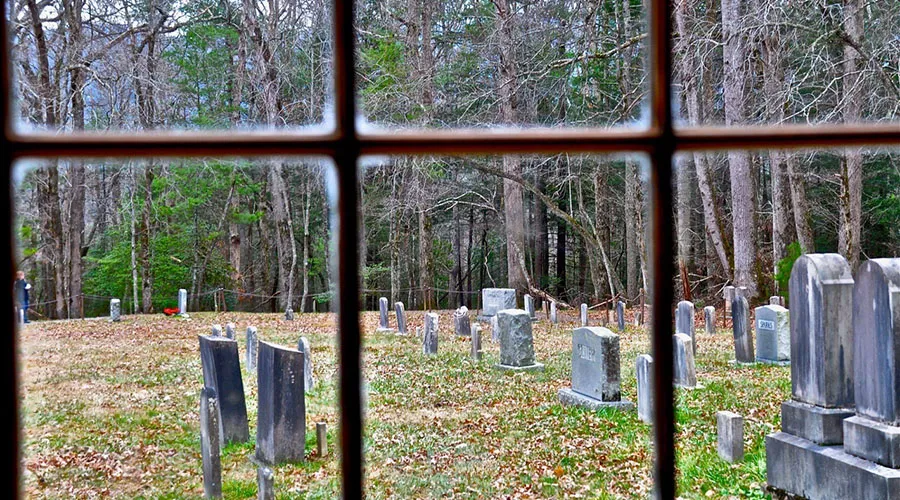
Horseback Riding
From mid-March through late November, you can enjoy guided horseback rides at three concession riding stables within the park. These rides vary from 45 minutes to several hours and traverse scenic park trails. Please note that weight limits and age restrictions may apply.
Additionally, two of the stables offer carriage and wagon rides. These 20-30 minute horse-drawn rides provide a charming way to experience the park’s trails.
The park features approximately 550 miles of hiking trails open to horses, but they are restricted to designated trails. If you plan to ride your own horse, be sure to obtain a trail map from the park, which shows the horse-accessible trails and outlines the park’s regulations for horseback riding in the backcountry.
Horse riders can use designated campsites along trails open to them, although some backcountry campsites require advance reservations. These sites are marked on the park’s trail map.
For convenient access to backcountry trails, five drive-in horse camps are available at Cades Cove (Anthony Creek), Big Creek, Cataloochee, Round Bottom and Towstring.

Bicycling
Bicycles are permitted on most roads within Great Smoky Mountains National Park, but many of these roads are challenging due to steep terrain, narrow surfaces, and heavy automobile traffic, which can make for a less safe and enjoyable ride.
An exception is Cades Cove Loop Road, an 11-mile one-way route popular among cyclists. It offers excellent wildlife viewing and a chance to explore 19th-century homesites. From May through September, Cades Cove is closed to motor vehicles all day on Wednesdays, providing a quieter experience for pedestrians and cyclists. During the summer and fall, bicycles can be rented at the campground store near Cades Cove Campground.
The park does not have designated mountain biking trails. However, bicycles are allowed on the Gatlinburg Trail, Oconaluftee River Trail, and lower Deep Creek Trail. All other park trails are off-limits to bicycles.
Other bicycle-friendly areas include the roads in the Greenbrier and Tremont regions in Tennessee, as well as Cataloochee Valley and Lakeview Drive in North Carolina.
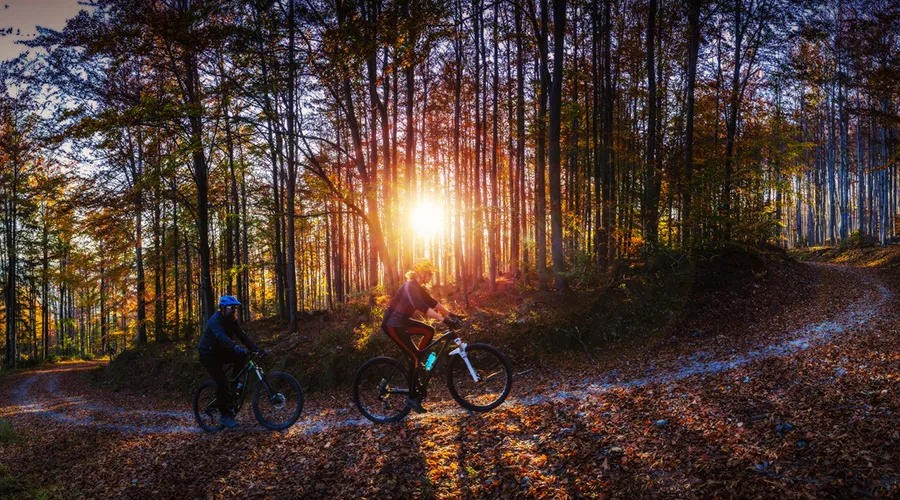
Fishing
Great Smoky Mountains National Park features about 2,900 miles of streams, including one of the last wild trout habitats in the eastern United States. Approximately 20% of these streams are large enough to support trout populations, offering a diverse range of fishing experiences. Whether you’re interested in remote headwater trout streams or larger coolwater smallmouth bass streams, the park provides excellent angling opportunities throughout the year. Most streams are well-stocked and can sustain healthy fish populations, making for productive fishing conditions.
Fishing is allowed year-round, from 30 minutes before sunrise to 30 minutes after sunset, in all of the park’s streams.
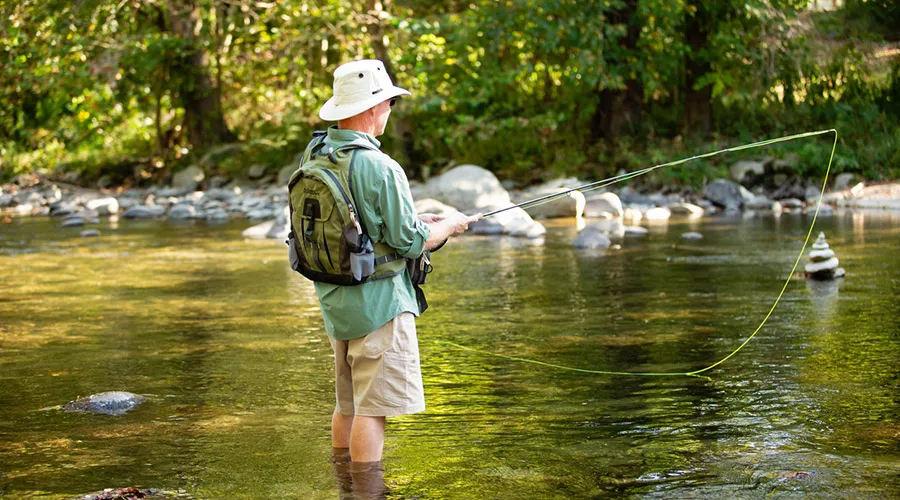
Picnicking
Picnic areas are available at several locations in the park, including Big Creek, Chimneys, Cades Cove, Collins Creek, Cosby, Deep Creek, Greenbrier, Heintooga, Look Rock, and Metcalf Bottoms.
The picnic areas at Cades Cove, Deep Creek, Greenbrier, and Metcalf Bottoms are open year-round. However, the other picnic areas are closed during the winter months.
Picnic pavilions can be found at Collins Creek, Cosby, Deep Creek, Greenbrier, Metcalf Bottoms, and Twin Creeks.
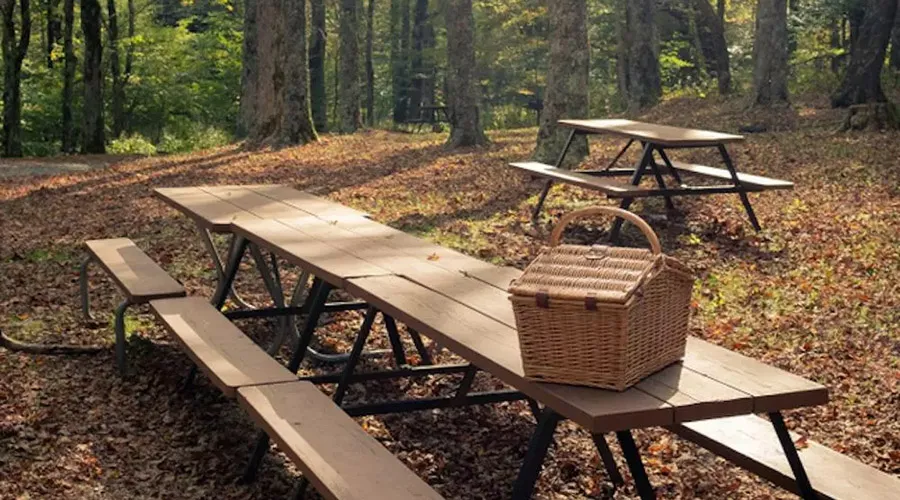
See Wildflowers
Great Smoky Mountains National Park is celebrated globally for its extraordinary wildflower diversity, boasting over 1,500 species—more than any other North American national park. Known as the “Wildflower National Park,” it offers year-round opportunities to admire blooming flowers. For a guide to their locations, consult the Species Mapper.
The blooming season kicks off with spring ephemerals, a unique group of flowers that emerge in late winter and early spring. These plants, such as trillium (with ten species in the park), lady slipper orchids, showy orchids, crested dwarf iris, fire pink, columbine, bleeding heart, phacelia, jack-in-the-pulpit, little brown jugs, and violets, make a brief but dazzling appearance from February through April before fading by May or June.
Each spring, the park hosts the Spring Wildflower Pilgrimage, a week-long event featuring programs, guided walks, and hikes to celebrate the park’s floral diversity.
Summer continues the floral display with vibrant red cardinal flowers, pink turtleheads, Turk’s cap lily, small purple-fringed orchids, bee-balm, butterfly-weed, black-eyed Susans, jewelweed, and more.
As summer transitions into fall, the bloom includes goldenrod, wide-leaved sunflowers, tall ironweed, mountain gentian, monk’s hood, coneflowers, and various asters. The towering purple umbels of sweet Joe-Pye-weed can reach up to ten feet, adding a dramatic touch to the autumn landscape.
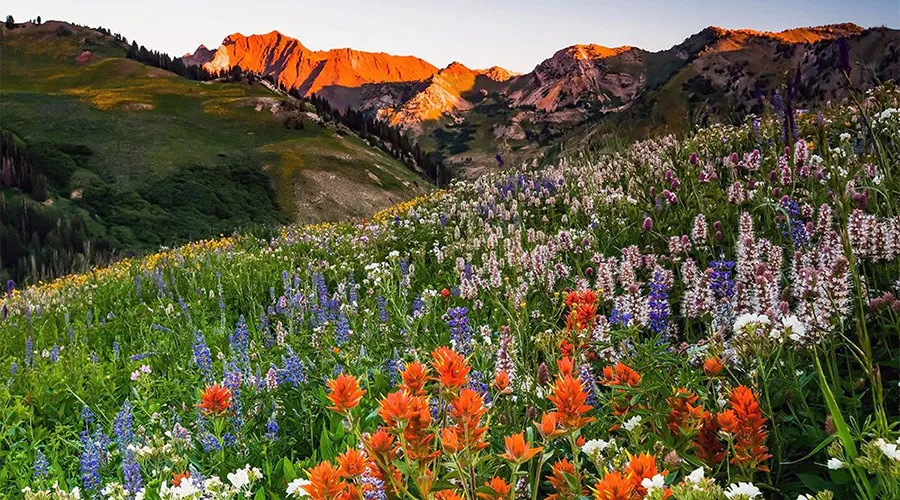
Places to stay in Great Smoky Mountains National Park
Finding the perfect place to stay can enhance your experience at Great Smoky Mountains National Park.
Camping
The park offers a variety of camping options to suit different needs. Backcountry campsites are ideal for backpackers, requiring a hike to reach remote sites in the park’s wilderness.
Frontcountry campsites are conveniently located near your car, with amenities such as restrooms, cold running water, and flush toilets, plus each site is equipped with a fire grate and picnic table.
Group campgrounds accommodate larger groups of eight or more and are situated within the frontcountry campgrounds. Horse camps are accessible by vehicle and provide hitch racks for horses along with basic camping facilities.
Each type of campground has unique facilities and reservation procedures, so be sure to click on the respective titles for more information.
Here are details of the campgrounds at Great Smoky Mountains National Park:
Frontcountry Camping
-
Cades Cove Campground
-
Elkmont Campground
-
Cosby Campground
-
Abrams Creek Campground
-
Big Creek Campground
-
Cataloochee Campground
-
Deep Creek Campground
-
Balsam Mountain Campground
-
Look Rock Campground

Group Campgrounds
-
Big Creek
-
Cades Cove
-
Cataloochee
-
Cosby
-
Deep Creek
-
Elkmont
-
Smokemont

Horse Camps
-
Anthony Creek
-
Big Creek
-
Cataloochee
-
Round Bottom
-
Tow String
You can see more details at: https://www.nps.gov/grsm/planyourvisit/carcamping.htm
Hotel and Resort
In addition to camping options, visitors can consider the following two more advanced options:
Folkestone Inn (3-Star)
The Folkestone Inn offers a quiet and tranquil setting for guests seeking solitude and peace. Located in a beautiful rural area just a quarter mile from the entrance to the Great Smoky Mountains National Park, it serves as a gateway to some of the most stunning hiking trails, waterfalls, flora, and fauna in the Southern Appalachians.
Address: 101 Folkestone Rd, Bryson City, NC 28713-7891
Price Range: $198 – $206/ night

LeConte Lodge
Perched high atop Mt. LeConte in the Great Smoky Mountains National Park, LeConte Lodge is the highest guest lodge in the eastern United States, located just below the summit at an elevation of about 6,400 feet. This lodge offers spectacular views of the Smokies and serves as a grandstand for the entire park.
Situated in the heart of the half-million-acre Great Smoky Mountains National Park, LeConte Lodge is the only place where visitors can spend the night on a mountaintop in a cozy, permanent structure while enjoying hot and hearty meals.
Address: Near the Summit of Mount LeConte, Great Smoky Mountains National Park, TN 37738
Price Range: From $380 per couple plus about $50 for two shirts

Dining
While there are limited dining options within the park, nearby towns offer a variety of restaurants and eateries. Some recommendations include:
Ole Red
Ole Red is more than just a venue, restaurant, or bar—it’s the ultimate country music experience. Enjoy the best live music in the Smokies from the country’s rising stars, alongside scratch-made dishes and signature drinks inspired by Blake Shelton. Treat yourself to a Cherry Limeade with moonshine, a burger with a side of their famous house-made tots, and catch your new favorite artist performing live on Ole Red’s state-of-the-art stage.
Address: 511 Parkway Traffic Light #3, Gatlinburg, TN 37738
Open time: 11:00 AM – 12:00 AM
Prices range: $9 – $30

LandShark Bar & Grill
LandShark Bar and Grill, located in the heart of downtown Gatlinburg, embodies the Margaritaville State of Mind. This restaurant offers American favorites, including wings, burgers, and fresh seafood, served daily!
Address: 515 Parkway, Gatlinburg, TN 37738-3201
Open time: 11:00 AM – 10:00 PM
Prices range: $12 – $20

No Way Jose’s
With locations in Gatlinburg and Pigeon Forge, TN, No Way Jose’s Cantina serves authentic Mexican cuisine that caters to everyone’s tastes. Offering a unique blend of favorite dishes, this family of restaurants provides a dynamic range of menus. Enjoy everything from delicious traditional breakfast items to modern steakhouse dining.
Address: 555 Parkway, Gatlinburg, TN 37738-3201
Open time: 11:00 AM – 9:00 PM
Prices range: $5 – $18

Donut Friar
Donut Friar, located in the picturesque setting of The Village in Gatlinburg, Tennessee, offers a delightful array of treats. Enjoy freshly made donuts, pastries, cinnamon bread, specialty coffee, hot chocolate, and hot cider.
Address: 634 Parkway Ste 15, Village Shoppes, Gatlinburg, TN 37738-3241
Open time: 5:00 AM – 9:00 PM
Prices range: $1 – $6

Planning Your Trip to Great Smoky Mountains National Park
Proper planning is essential to make the most of your visit to Great Smoky Mountains National Park.
Visiting Time
Great Smoky Mountains National Park is open year-round, offering unique experiences in every season. Choosing the best time to visit depends on your interests:
Spring: This season is perfect for those who love wildflowers and mild weather. From March to May, the park bursts into bloom with a vibrant display of over 1,500 species of flowering plants. The temperatures are generally mild, making it an ideal time for hiking and enjoying the scenery without the summer crowds. Spring also brings a variety of wildlife sightings as animals become more active after winter.
Summer: From June to August, summer is a prime time for hiking and exploring the park’s numerous trails, waterfalls, and scenic vistas. The lush, green landscape is at its peak, and visitors can enjoy activities like camping, fishing, and picnicking. However, summer is also the park’s busiest season, so expect larger crowds, especially at popular spots like Clingmans Dome and Cades Cove. The temperatures can be warm, particularly at lower elevations, but the higher elevations remain pleasantly cool.
Fall: Autumn, spanning September to November, is famous for its stunning foliage. The park’s deciduous trees transform into a spectacular array of red, orange, and yellow hues, attracting photographers and nature enthusiasts from around the world. The cooler temperatures make for comfortable hiking conditions, and the crisp air enhances the breathtaking views. Fall is also a popular time for wildlife viewing, as animals prepare for winter. However, it’s important to note that this is another peak season, so plan accordingly to avoid the heaviest crowds.
Winter: Winter in the park, from December to February, offers a quieter and more serene experience. The chance to see snow-covered landscapes adds a magical touch to the park’s beauty. While some higher elevation roads and facilities may close due to snow and ice, many lower elevation trails and scenic drives remain accessible. Winter hiking provides solitude and the opportunity to see frozen waterfalls and icicles. The park’s peaceful atmosphere during this season is perfect for those looking to escape the hustle and bustle of daily life.
Spring in Great Smoky Mountains National Park
Summer in Great Smoky Mountains National Park
Autumn in Great Smoky Mountains National Park
Winter in Great Smoky Mountains National Park
Transportation
Great Smoky Mountains National Park is accessible by car, but there are no public transportation services directly to the park. Here are some options and details for getting to the park:
By Car:
Driving is the most common way to reach Great Smoky Mountains National Park. The park has several entrances:
-
Gatlinburg, Tennessee: The most popular entrance is via U.S. Highway 441, which runs through the park.
-
Townsend, Tennessee: This quieter entrance is accessible via State Route 73.
-
Cherokee, North Carolina: Another main entrance is through U.S. Highway 441 from the south.
-
Cosby, Tennessee: Accessible via State Route 32, this entrance is less crowded.
Nearest Airports:
-
McGhee Tyson Airport (TYS) in Knoxville, Tennessee: Approximately 45 miles from the park.
-
Asheville Regional Airport (AVL) in Asheville, North Carolina: About 60 miles from the park.
-
Hartsfield-Jackson Atlanta International Airport (ATL) in Atlanta, Georgia: About 150 miles from the park.
Car Rentals:
Renting a car from any of these airports is a convenient option to reach the park. All major car rental companies operate at these airports.
Shuttle Services:
While there are no direct public transport services to the park, some shuttle services and tours operate from nearby towns:
-
Smoky Mountain Shuttle: Offers transportation from Knoxville, TN to Gatlinburg and Pigeon Forge.
-
Rocky Top Tours: Provides shuttle services and guided tours from nearby towns.
Public Transportation:
There is limited public transportation near the park. The closest you can get via bus or train is to the nearby cities:
-
Greyhound Bus Lines: Serves cities like Knoxville, TN, and Asheville, NC. From there, you will need to rent a car or take a shuttle to the park.
-
Amtrak: The nearest Amtrak stations are in Knoxville, TN, and Asheville, NC.
In-Park Transportation:
Once inside the park, visitors typically rely on personal vehicles to get around. There are also some seasonal trolley services in Gatlinburg and Pigeon Forge that can take you to various attractions in those towns, but they do not operate within the park itself.
Conclusion
The Great Smoky Mountains National Park is a treasure trove of natural beauty and biodiversity, offering visitors a unique glimpse into one of the most ecologically rich regions in the United States. With its mist-covered peaks, lush forests, diverse wildlife, and abundant cultural history, the park provides an unparalleled outdoor experience. As a UNESCO World Heritage Site, the park not only preserves a precious ecosystem but also invites us to reflect on the importance of conservation and the enduring value of our natural heritage. Visiting the Great Smoky Mountains National Park is not just a trip, but a journey into the heart of nature’s grandeur and a reminder of the beauty that lies in preserving our natural world for future generations.
Great Smoky Mountains National Park Photos
Q&A for Great Smoky Mountains National Park
The best time to visit depends on your interests. Spring and fall are ideal for mild weather and beautiful scenery, while summer offers more activities but can be crowded. Winter provides a quieter experience with possible snow.
No, the park does not charge an entrance fee. However, there may be fees for camping or specific activities.
Pets are allowed in the park but must be leashed and are restricted to certain areas. Check the park’s pet policy for details.
You can find up-to-date information on the official Great Smoky Mountains National Park website or contact the park’s visitor center.
Yes, there are various guided tours and ranger-led programs available throughout the year. Check the park’s schedule for details and reservations.
